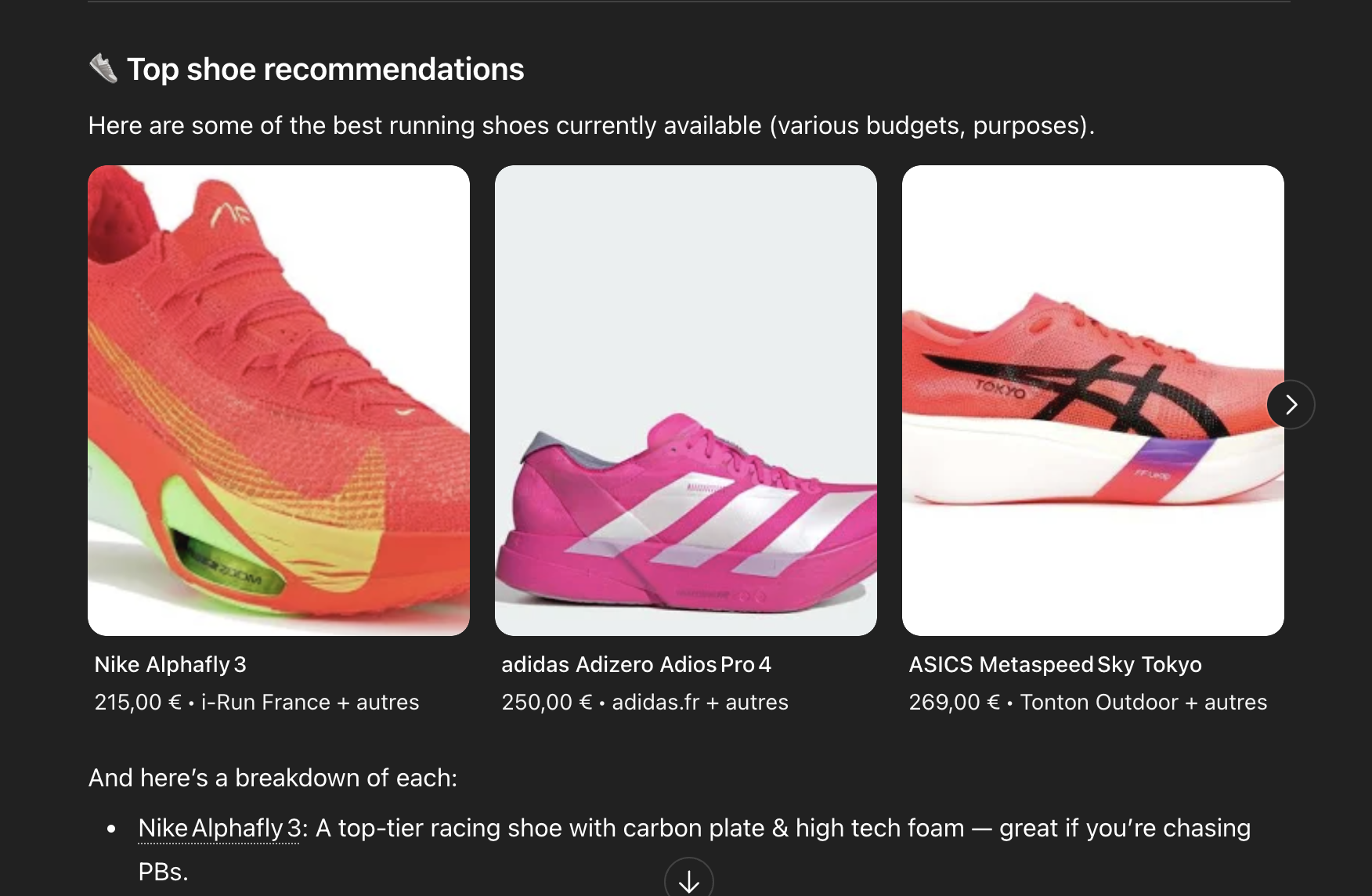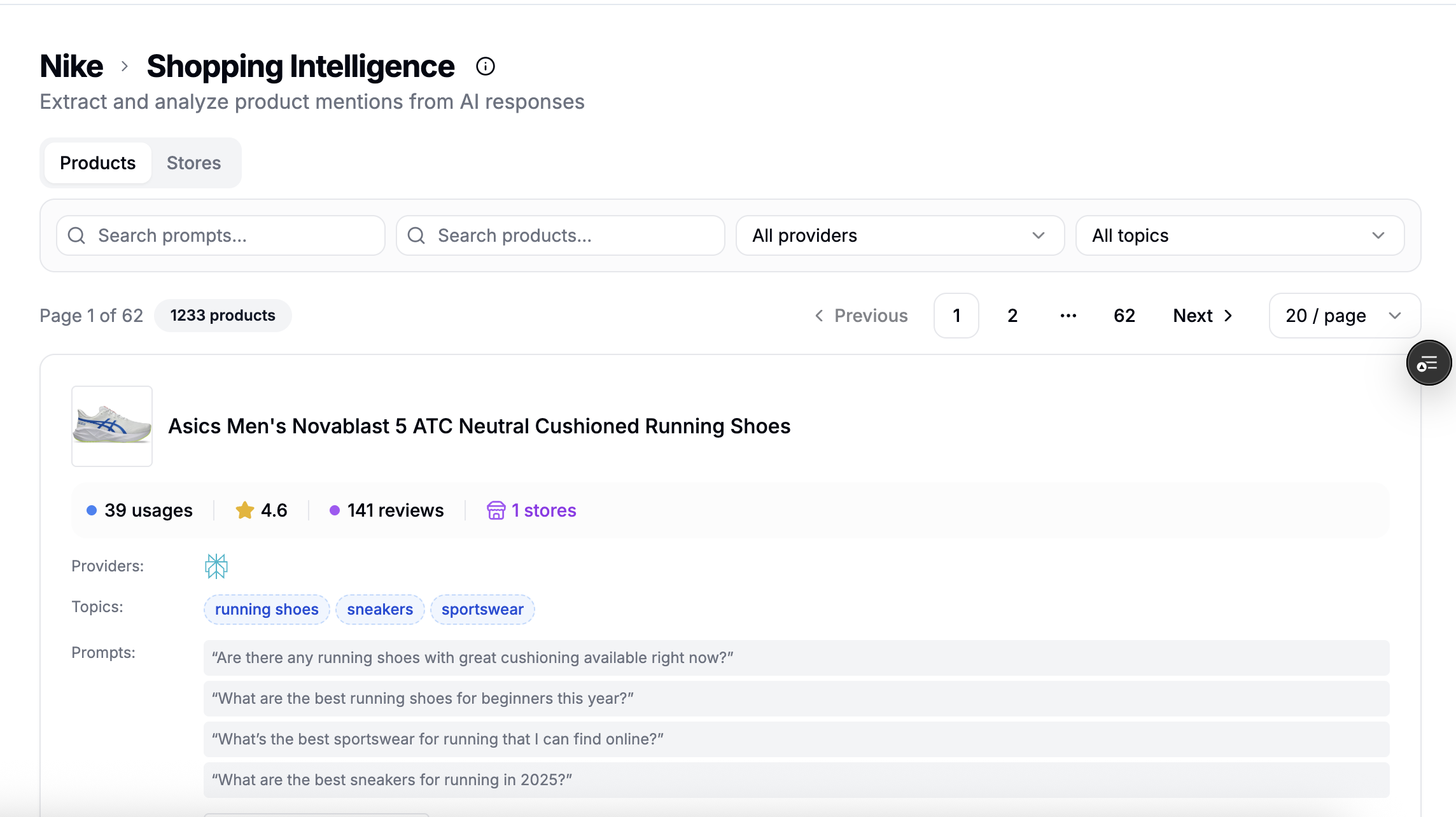- Which products are most frequently recommended by LLMs
- Whether your brand is represented in AI shopping conversations
- Which retailers and stores the AI points to
- The prompts that generate these mentions
- The topics and use cases associated with each product
- Which competitor products dominate LLM answers
What Shopping Intelligence Tracks
Whenever an LLM mentions a product in a response—example:
“The Asics Novablast 5 is a great cushioned running shoe available this year…”

- The product name
- Product image (if available)
- Rating, reviews, and price (when provided by the AI)
- The LLM provider (ChatGPT, Claude, Gemini…)
- Topics associated with the product
- The prompts that caused the model to recommend it
- The buy link or retailer the LLM suggests
🎯 Purpose of Shopping Intelligence
Shopping Intelligence helps you answer:1. Which products do LLMs recommend most often in my category?
You can identify top-mentioned competitor products and rising trends.2. How often does the AI recommend my products?
Track frequency, ranking, and visibility of your catalog.3. In which contexts or queries does my product appear?
Understand the prompts and scenarios where LLMs suggest your items.4. Which stores or retailers does the AI link to?
Models may drive traffic to Amazon, Nike.com, Walmart, etc.🧭 Navigating Shopping Intelligence

Insights → Shopping Intelligence You can toggle between:
- Products — list of individual product mentions
- Stores — list of retailers and where the LLM redirects users
✅ Product card with:
- Number of usages
- Rating (when provided)
- Review count
- Store count (number of retailers the LLM links to)
✅ Providers
Which AI generated this product mention (ChatGPT, Claude, Gemini, etc.)✅ Topics
Tags extracted from prompts (e.g., running shoes, sneakers, sportswear)✅ Prompts
The exact user prompts that triggered the product recommendation(e.g., “What are the best running shoes for beginners this year?”)
✅ Buy from
Stores or links the AI used for the product.Example:
View product — USD 149.95

